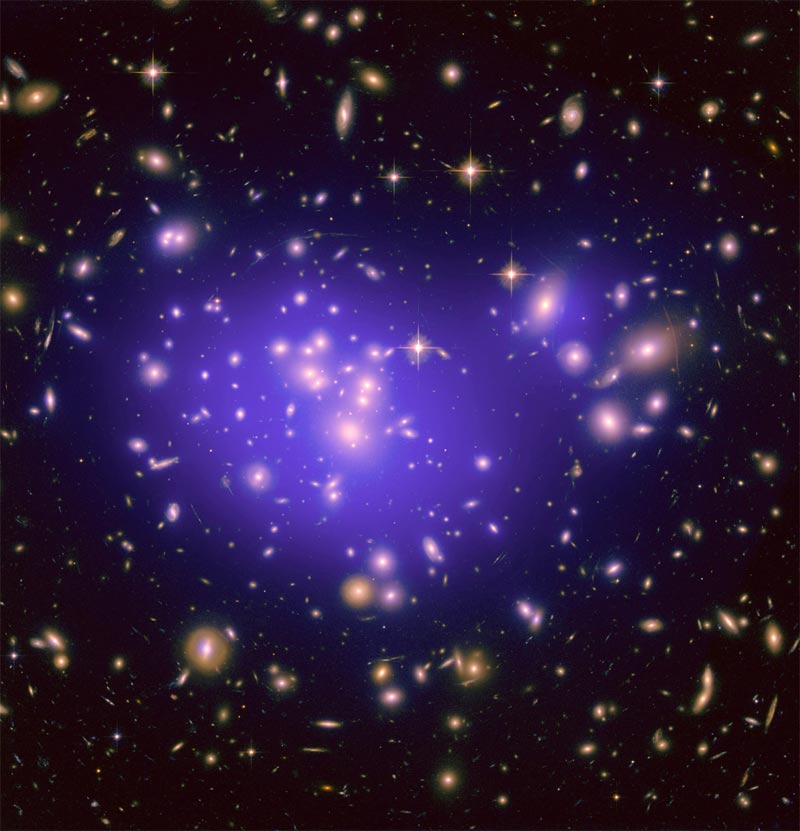Dark Energy Mystery Illuminated By Cosmic Lens

By peering at the distant reaches of the universe through agalactic magnifying lens, astronomers may have found a way to better understandmysterious dark energy, which is thought to be speeding up the expansion of thecosmos.
Though scientists don't know whatdark energy is ? nor have they proven definitively that it exists ? theythink it is the force causing galaxies to stray away from each other at anever-quickening pace. Dark energy is the name given to whatever stuff ispermeating the universe and causing this surprising accelerated expansion..
In the new study, astronomers used a massive galaxy clustercalled Abell 1689 as a giant cosmic lens to study how mass warps space and timearound it. When light from even more distant galaxies passes near the clusteron its way to our telescopes on Earth, the light appears magnified anddistorted because of this effect. [Photo of the cosmic lens around Abell 1689]
The researchers examined 34 pictures of these far-awaygalaxies, taken by the Hubble Space Telescope and ground-based observatories,to study the geometry of space-time. This property is thought to be influencedby darkenergy, which makes up about 72 percent of all the mass and energy in theuniverse, scientists think.
"The geometry, the content and the fate of the universeare all intricately linked," said researcher Priyamvada Natarajan of YaleUniversity in a statement. "If you know two, you can deduce the third. Wealready have a pretty good knowledge of the universe's mass-energy content, soif we can get a handle on its geometry then we will be able to work out exactlywhat the fate of the universe will be."
The researchers combined their measurements of the bentlight ? a phenomenon known as gravitationallensing ? with previous calculations of the universe's geometry based onobserving supernovas, galaxy clusters and other heavenly objects. Together,these clues helped narrow down estimates of dark energy's properties.
"Using our unique method in conjunction with others, wewere able to come up with results that were far more precise than any achievedbefore," said co-researcher Jean-Paul Kneib of the Laboratoired'Astrophysique de Marseille in France.
Breaking space news, the latest updates on rocket launches, skywatching events and more!
Ultimately, the researchers were able to refine estimatesfor dark energy's so-called equation-of-state parameter, called w, which relatesto how dark energy shapes the universe. They were able to reduce theuncertainty in this value by about 30 percent.
The new findings are detailed in a paper published in theAugust 20 issue of the journal Science.
- Top 10 Strange Things in Space
- The Big Bang: Solid Theory, But Mysteries Remain
- What Is Dark Energy?

Clara Moskowitz is a science and space writer who joined the Space.com team in 2008 and served as Assistant Managing Editor from 2011 to 2013. Clara has a bachelor's degree in astronomy and physics from Wesleyan University, and a graduate certificate in science writing from the University of California, Santa Cruz. She covers everything from astronomy to human spaceflight and once aced a NASTAR suborbital spaceflight training program for space missions. Clara is currently Associate Editor of Scientific American. To see her latest project is, follow Clara on Twitter.
